
Sign up for daily news updates from CleanTechnica on email. Or follow us on Google News!
Two years ago this month, I saw my first Amazon Prime Rivian electric delivery van (lead figure of this article) just across my street. The driver said he loved the new van and was kind enough to pose for pictures and show me inside. He said Amazon already had ~100 electric delivery vans operating out of their distribution center just north of us in American Fork, Utah. These are some of the first 20,000 of the 100,000 electric delivery vans that Amazon has on order from Rivian. I have seen Amazon Prime Rivian electric delivery vans around my neighborhood nearly every day since. Amazon is definitely the industry leader in conversion to electric delivery vans.
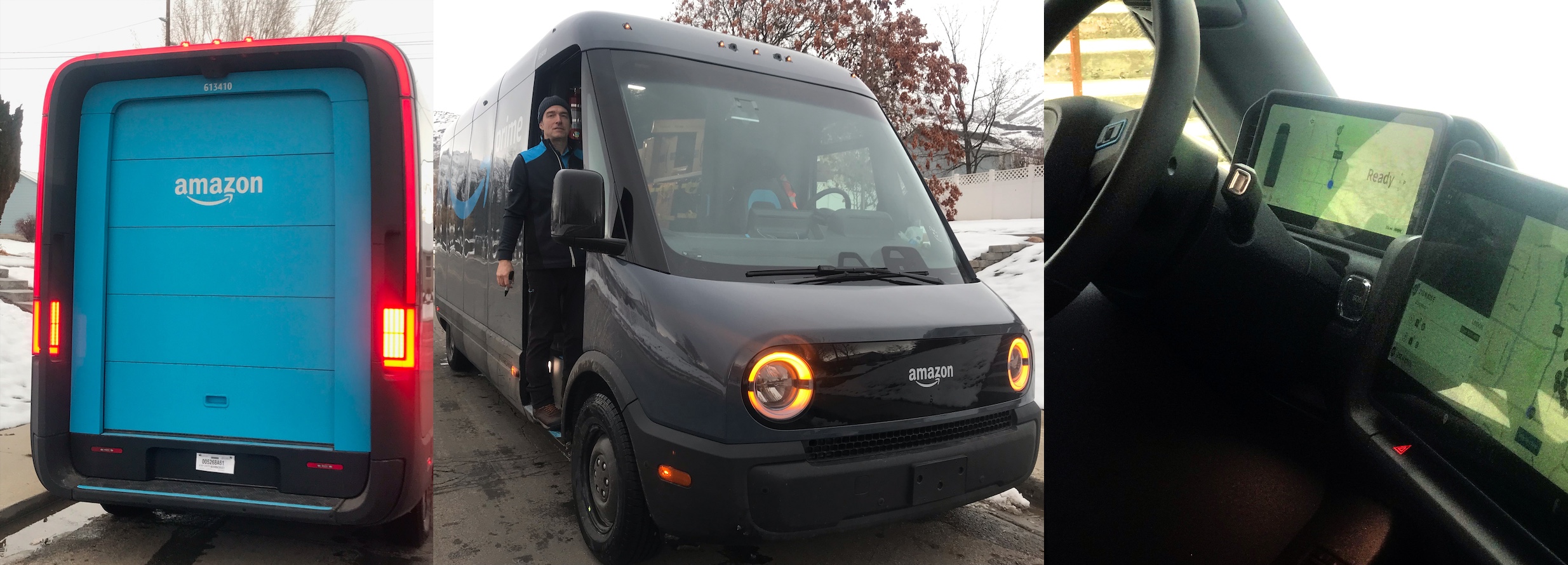
I have a friend working for Amazon in the Charlotte, North Carolina, area and his crew is driving primarily Rivian electric vans there as well. The image below shows a van loaded with packages at an Amazon fulfillment center there.
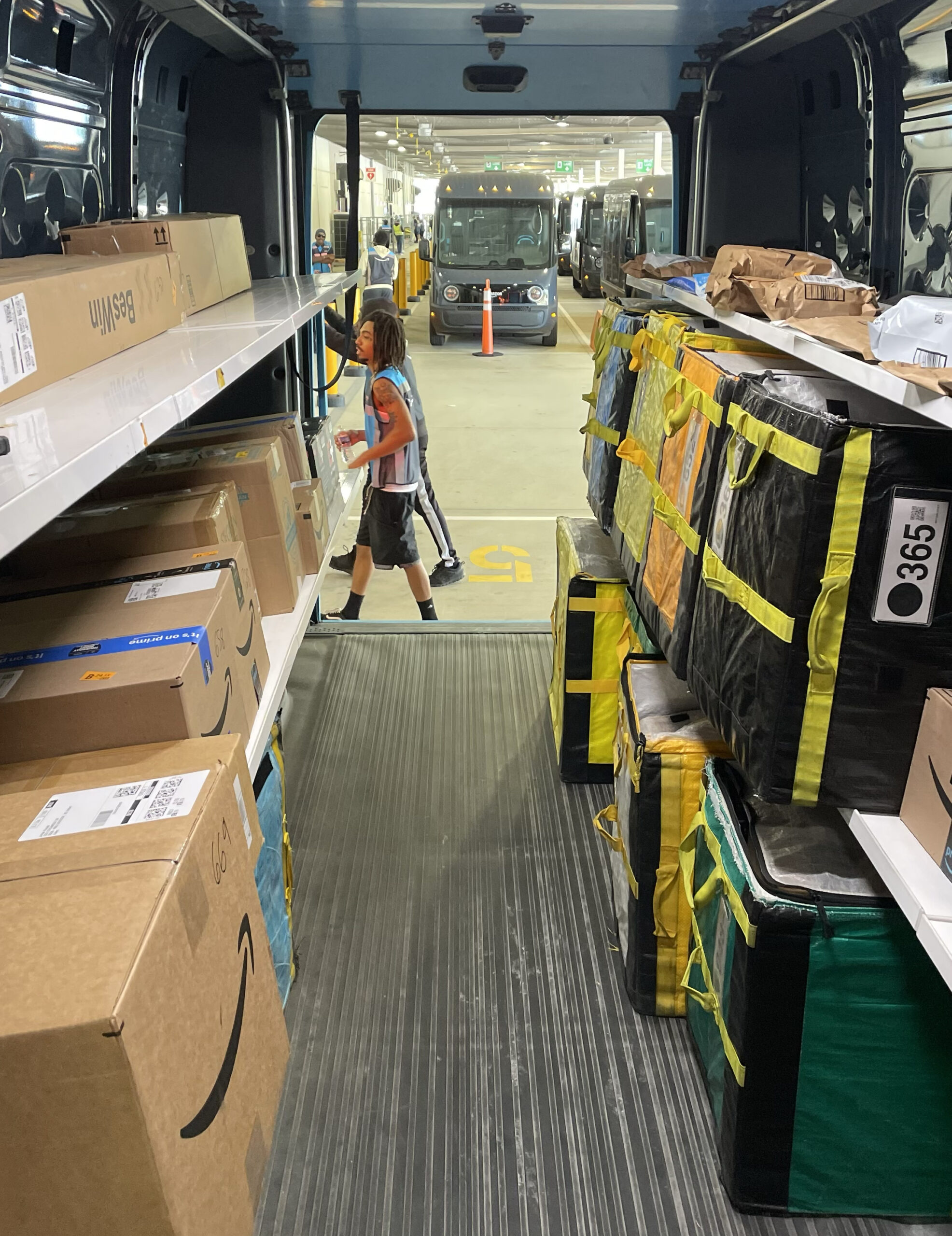
The next photo shows two versions of the Amazon Prime Rivian electric vans in operation in Charlotte.
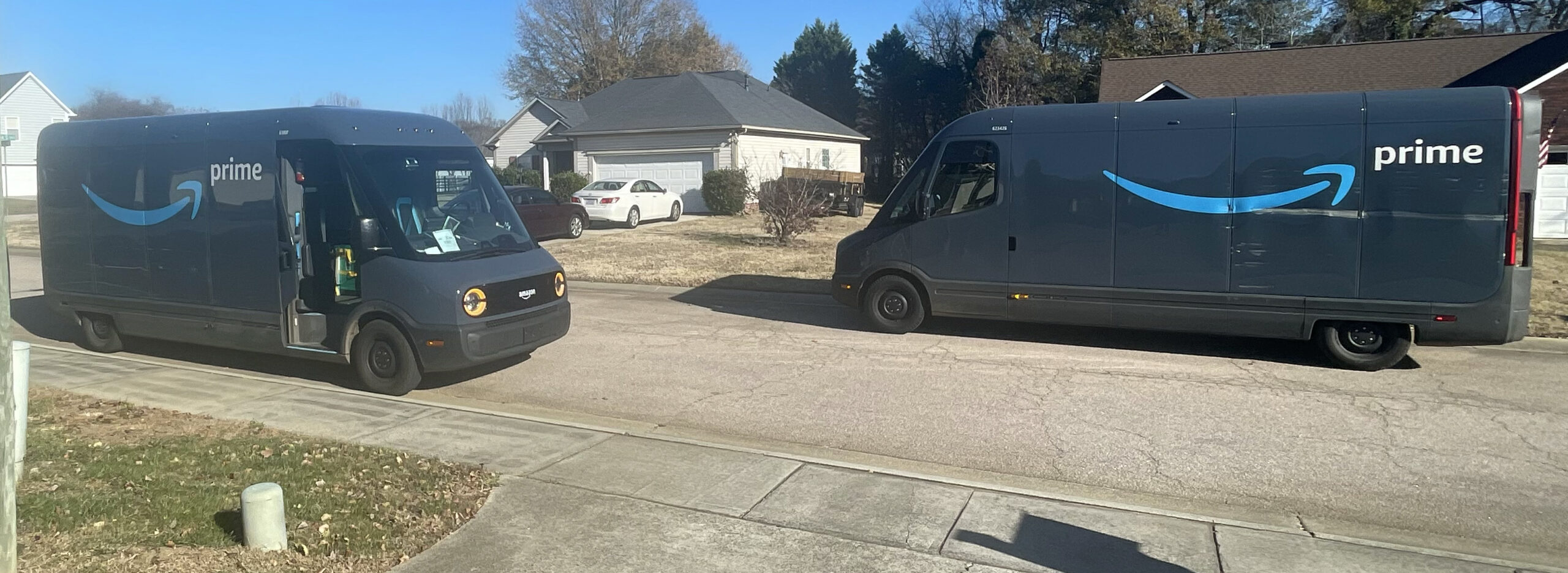
The following photo shows two Amazon vans exchanging packages.

The next image shows a lineup of Amazon Prime Rivian electric delivery vans charging in Charlotte, North Carolina. You can see there is a charger for each van. These are certainly level 2 chargers which are easily fast enough to give each van an overnight charge so that they can all start the workday with a full charge and enough power to do their whole route that day.
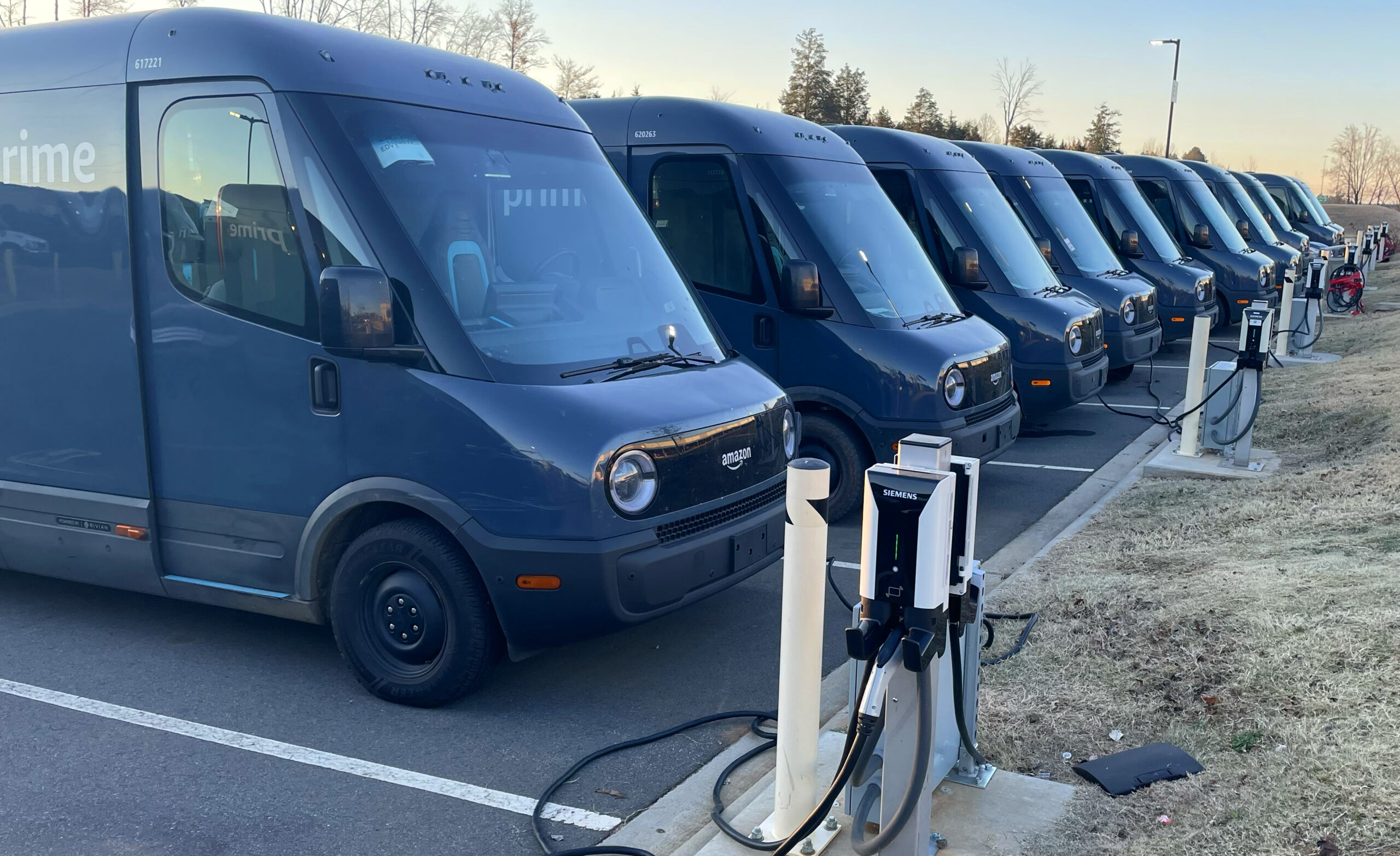
The other electric van currently in service is the new USPS vehicle shown in the next photo.
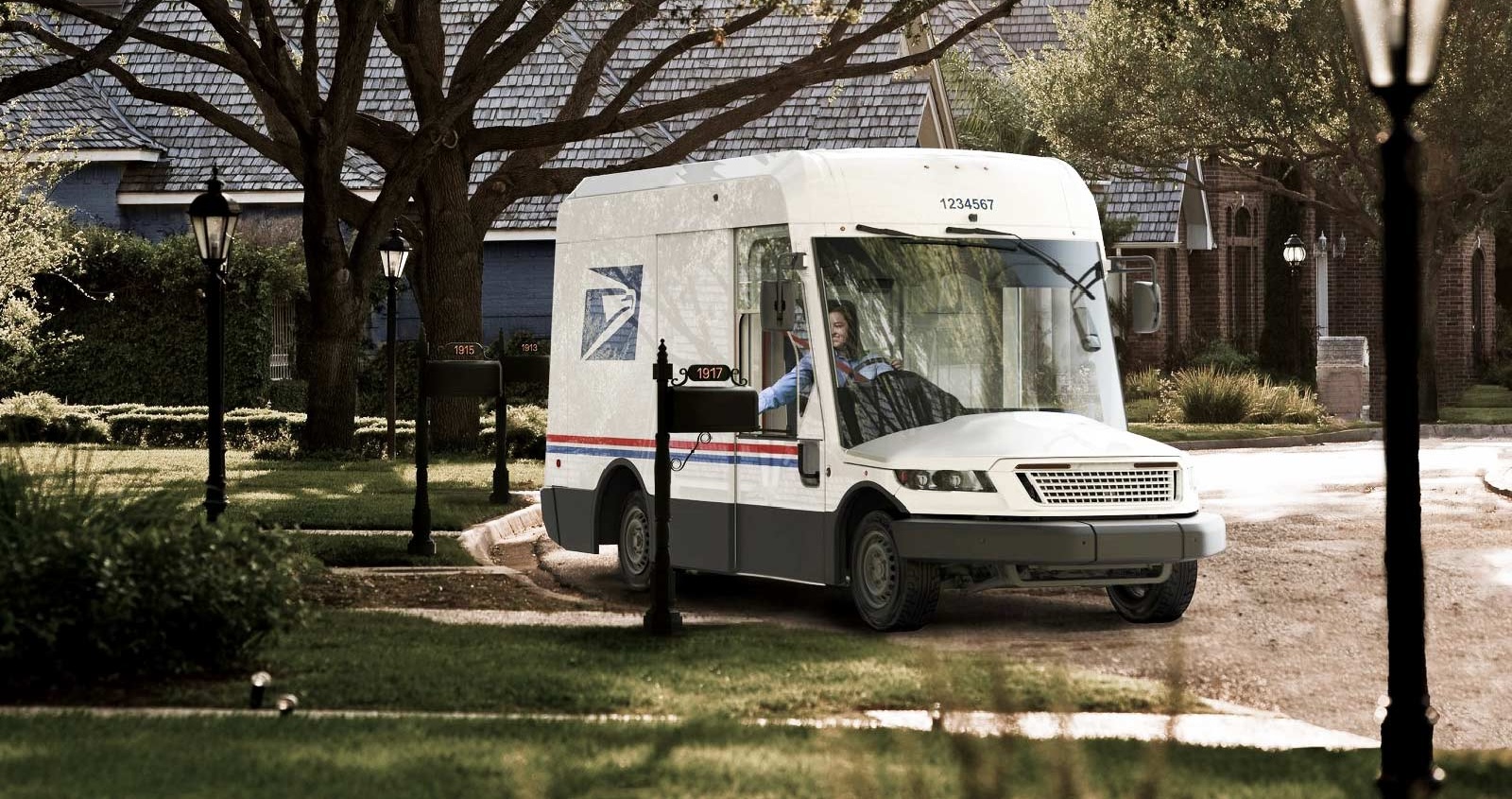
Otherwise, what is the current state of delivery van technology in the US? The UPS, FedEx, and USPS vans that I see in my neighborhood in northern Utah are old technology gas vans as shown in the figure below. Consider that Amazon Prime only uses their own vans in metropolitan areas where they have a lot of deliveries. They contract out to UPS or the USPS in rural areas. Another consideration is what vehicles the USPS uses. USPS only uses its own vehicles in metropolitan regions. In rural northern Wisconsin where we spend our summers, the USPS contracts out to individuals who use their private vehicles to make deliveries.

The USPS has more than 200,000 Grumman “Long Life” gas vehicles, introduced in 1987 as shown in the righthand panel of the previous figure. The earliest of these vans have already exceeded their expected 25 year service life by 13 years. They are intolerable for the postal employees in hot climates in the summer because they have no air conditioning. As they get older, these vehicles become more and more difficult to maintain, as parts are nearly impossible to obtain.
On December 20, 2022, the US Postal Service (USPS) announced “an historic $9.6 billion investment over the next five years to electrify its delivery fleet. The USPS investment includes electrifying 75% of its new purpose-built Next Generation Delivery Vehicles (NGDV) and a commitment to acquire 100% electric NGDVs starting in 2026. This $9.6 billion investment includes $3 billion in funding from the Inflation Reduction Act.”
On February 28, 2023, “the United States Postal Service awarded contracts […] for 9,250 commercially available left-hand drive (LHD) battery electric vehicles (BEVs) as well as initial orders for more than 14,000 charging stations to be deployed at Postal Service facilities. These awards are consistent with the vehicle electrification strategy announced by USPS in December of 2022. After a competitive search, the Postal Service (also) awarded a contract to purchase a total of 9,250 Ford E-Transit Battery Electric Vehicles. Delivery of the vehicles is intended to commence in December of this year.”
One would have expected this to be a no brainer: Buy off-the-shelf Ford E-Transit vans. However, it’s not working because demand for Ford E-transit vans is off the charts from other buyers as well. The photo below shows a Ford E-Transit BEV van that has been purchased by Amazon.
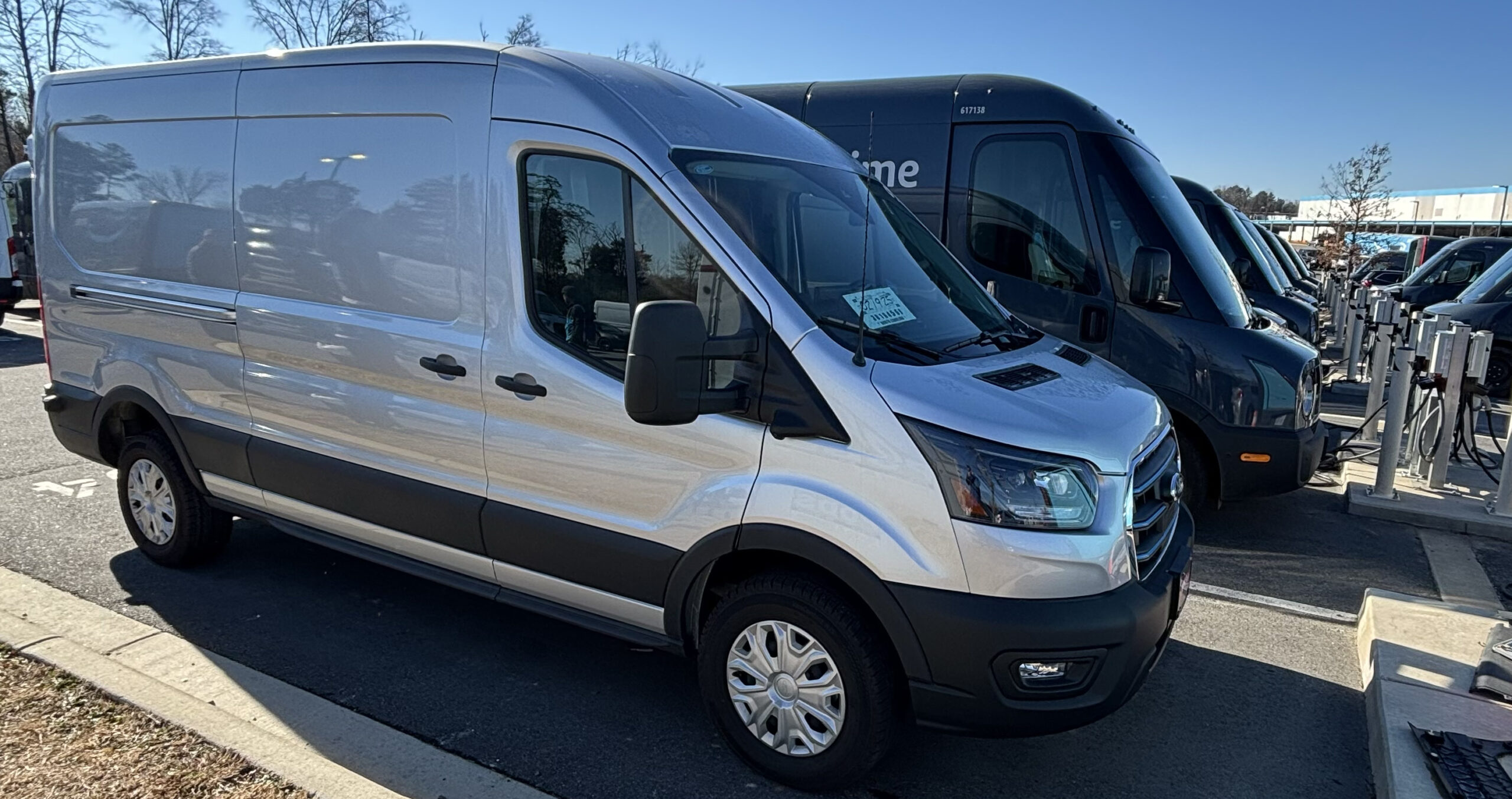
The USPS has contracted with Oshkosh Defense Inc. in South Carolina to replace these vans with a brand new custom-designed vehicle (the New Generation Delivery Vehicle) as shown in the sixth figure above. Originally, USPS was going to replace them primarily with gas vehicles. However, with pressure from the Biden administration and others, it was decided that 80% would be electric vehicles. According to the Washington Post: “Defense contractor Oshkosh had only delivered 93 trucks by November (2024) compared to 3,000 originally expected by now. USPS is slated to purchase 60,000 of these in the coming years at a cost of around $10 billion. Unfortunately, Ford E-Transit deliveries aren’t up to snuff, either. USPS has reportedly ordered around 5,000 E-Transit vans, but has only received a fraction of that thus far. The delays put Biden’s climate goals at risk.”
With the Trump administration due shortly to take office, these procurements of EVs are in jeopardy. The few vehicles that have been delivered have been delivered to the USPS in Athens, Georgia. I’ve seen none of these new EVs in Utah or on my cross-country travels.
What’s wrong with current-technology USPS Grumman Long Life Vehicle vans:
- Some are already 13 years beyond their projected lifetime, and are now difficult and expensive to maintain.
- Fire prone.
- Rear wheel drive only. Very difficult to manage in snowy weather in hilly country.
- No air conditioning (impossible for the drivers in hot climates in summer).
- Not tall enough: Postal employees must bend over when preparing deliveries in the van.
- Small cargo capability.
- Very inefficient (9 miles/gallon.
Advantages of new Oshkosh Defense Electric Vans over current vans:
- New vehicles with current electric technology, much easier and cheaper to maintain.
- No oil changes, no emission inspection, no exhaust system repairs, virtually no transmission repairs, virtually no brake repairs.
- Air conditioning (especially important for summer in warmer climates).
- Four-wheel (dual-motor) drive for northern climates.
- Taller rear box where drivers can stand up while preparing mail.
- Much less fire prone (contrary to popular belief).
- Extremely efficient: Capture energy on deceleration in constant stop & go operation.
- Overnight charge: Start each day with enough range to do the entire route.
- Airbags
- 360-degree cameras.
- Blind-spot monitoring.
- Collision sensors.
- Anti-lock brakes.

Chip in a few dollars a month to help support independent cleantech coverage that helps to accelerate the cleantech revolution!
Have a tip for CleanTechnica? Want to advertise? Want to suggest a guest for our CleanTech Talk podcast? Contact us here.
Sign up for our daily newsletter for 15 new cleantech stories a day. Or sign up for our weekly one if daily is too frequent.
CleanTechnica uses affiliate links. See our policy here.
CleanTechnica’s Comment Policy




